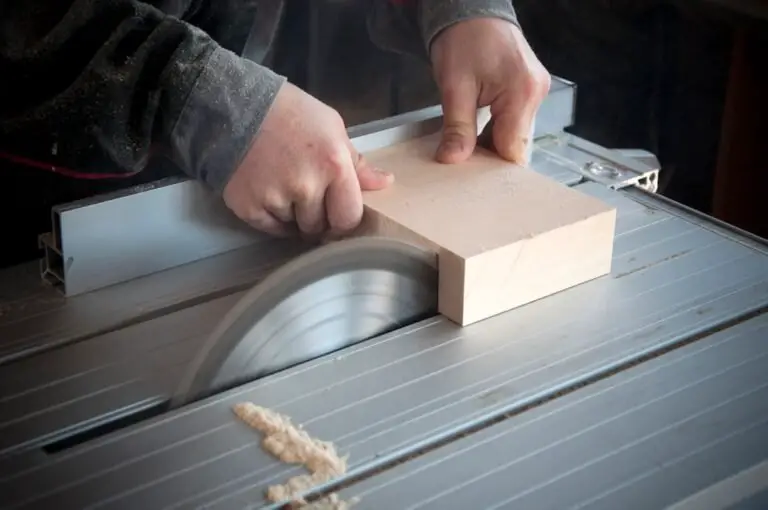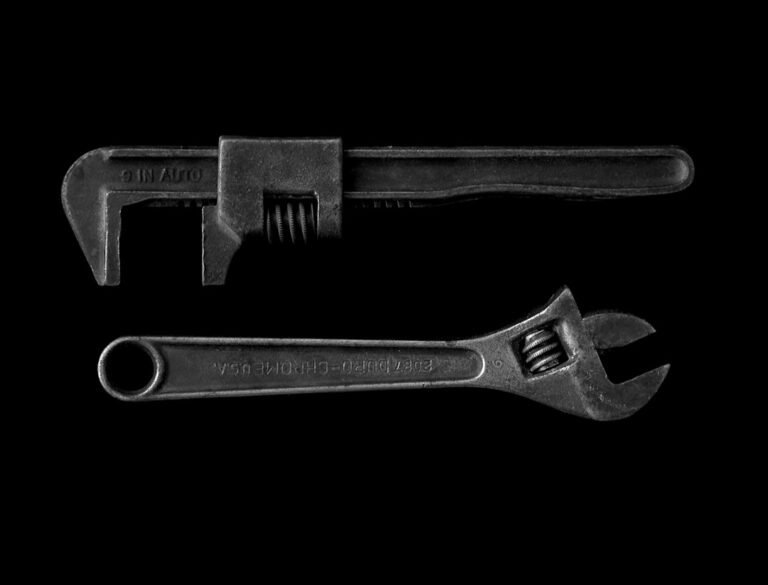Selecting the appropriate wood cutting tools is a fundamental step for anyone embarking on woodworking projects, whether they are a novice or a seasoned craftsman. The vast array of tools available can be overwhelming, but understanding the specific needs of your project is crucial. Different types of wood require different cutting techniques, and the choice of tool can significantly affect the quality of the finished product.
For instance, if you are working with hardwoods, you may need more robust tools that can withstand the density and toughness of the material. Conversely, softer woods might allow for lighter, more delicate tools that can achieve finer cuts without excessive effort. Moreover, the intended use of the wood also plays a pivotal role in tool selection.
Are you crafting furniture, building a deck, or perhaps creating intricate carvings? Each task demands a unique set of tools tailored to its specific requirements. Additionally, consider the ergonomics and comfort of the tools; a well-balanced saw or chisel can make a world of difference during prolonged use.
Investing time in researching and understanding the various options available will not only enhance your efficiency but also elevate the quality of your craftsmanship. Ultimately, choosing the right wood cutting tools is about aligning your project goals with the capabilities of the tools at your disposal.
Key Takeaways
- Choose the right wood cutting tools based on the specific project and type of wood being used
- Hand saws are essential for precision cuts and are versatile for various woodworking tasks
- Power saws are ideal for large projects and can make cutting wood quicker and more efficient
- Chisels and mallets are perfect for fine detail work and shaping wood with precision
- Axes and hatchets are essential for outdoor projects and cutting through thicker pieces of wood
- Always wear safety gear such as goggles, gloves, and ear protection when cutting wood
- Regular maintenance and care of wood cutting tools is crucial for keeping them in top shape and ensuring safety while working
Hand Saws: A Must-Have for Precision Cuts
The Precision of Hand Saws
Hand saws are essential tools for any woodworker, known for their ability to deliver precise cuts that power saws may not replicate. The simplicity of a hand saw allows for greater control over the cutting process, making it ideal for intricate work where accuracy is paramount. Whether you are making fine dovetail joints or cutting along a marked line, hand saws provide the tactile feedback that many craftsmen appreciate.
Versatility and Portability
The variety of hand saws available—ranging from panel saws to coping saws—ensures that there is a suitable option for nearly every type of cut and wood grain. In addition to their precision, hand saws are often more portable and easier to store than their power counterparts. This makes them particularly appealing for those who may not have a dedicated workshop or who prefer to work in various locations.
The Benefits of Traditional Woodworking
Furthermore, hand saws require no electricity, allowing for uninterrupted work in remote areas or during power outages. The quiet operation of hand saws also contributes to a more meditative woodworking experience, enabling artisans to focus on their craft without the distractions often associated with power tools. Ultimately, hand saws embody a blend of tradition and functionality that continues to resonate with woodworkers today.
Power Saws: Making Quick Work of Large Projects

Power saws revolutionized woodworking by introducing speed and efficiency into the cutting process, making them essential for larger projects that demand significant material removal. These tools come in various forms, including circular saws, miter saws, and table saws, each designed to tackle specific tasks with remarkable ease. For instance, a circular saw is perfect for making straight cuts across large sheets of plywood, while a miter saw excels at creating precise angled cuts for framing or molding.
The versatility of power saws allows woodworkers to complete projects in a fraction of the time it would take using hand tools alone. However, while power saws offer undeniable advantages in terms of speed and efficiency, they also require a certain level of skill and safety awareness. The rapid movement of blades can pose significant risks if not handled properly, making it essential for users to familiarize themselves with each tool’s operation before diving into their projects.
Additionally, understanding how to set up and adjust these machines for optimal performance is crucial; improper settings can lead to inaccurate cuts or even damage to the material being worked on. Despite these considerations, the benefits of power saws in terms of productivity and precision make them an invaluable asset for any serious woodworker.
Chisels and Mallets: Perfect for Fine Detail Work
| Chisel Type | Material | Blade Width | Mallet Type |
|---|---|---|---|
| Flat Chisel | Steel | 1/4 inch | Wooden Mallet |
| Skew Chisel | Carbon Steel | 1/2 inch | Rubber Mallet |
| Gouge Chisel | Chrome Vanadium Steel | 3/8 inch | Brass Mallet |
When it comes to fine detail work in woodworking, chisels and mallets are indispensable tools that allow artisans to achieve intricate designs and precise finishes. Chisels come in various shapes and sizes, each tailored for specific tasks such as paring, carving, or mortising. Their sharp edges enable woodworkers to remove small amounts of material with great accuracy, making them ideal for creating joints or decorative elements that require a delicate touch.
Coupled with a mallet, which provides controlled force without damaging the chisel’s edge, these tools empower craftsmen to execute their visions with finesse. The art of using chisels effectively lies not only in their selection but also in mastering technique. Proper grip and angle are essential for achieving clean cuts and avoiding splintering or tearing of the wood grain.
Additionally, maintaining sharp edges through regular honing ensures that chisels perform optimally and produce clean results. As woodworkers become more adept at using chisels and mallets, they often find themselves exploring more complex projects that push their creative boundaries. The satisfaction derived from transforming raw wood into finely detailed pieces is unparalleled, making chisels and mallets essential companions on any woodworking journey.
Axes and Hatchets: Essential for Outdoor Projects
Axes and hatchets are quintessential tools for outdoor woodworking projects, offering versatility and power that make them ideal for tasks such as felling trees, splitting logs, or shaping rough timber. The design of these tools allows for efficient cutting through thick materials, making them indispensable for anyone working in natural settings or engaging in rustic woodworking endeavors. While axes are typically larger and suited for heavier tasks like chopping down trees or splitting firewood, hatchets are smaller and more portable, perfect for lighter tasks such as carving or trimming branches.
Using axes and hatchets requires a different skill set compared to other woodworking tools; proper technique is crucial to ensure both safety and effectiveness. Mastering the swing and understanding how to leverage body weight can significantly enhance cutting efficiency while minimizing fatigue. Additionally, outdoor projects often present unique challenges such as uneven terrain or unpredictable weather conditions; having reliable axes and hatchets can make all the difference in successfully completing these tasks.
As woodworkers embrace outdoor projects, these tools become not just instruments but extensions of their creativity and resourcefulness in working with nature.
Safety Gear: Protecting Yourself While Cutting Wood

Personal Protective Equipment (PPE)
Safety should always be a top priority when engaging in woodworking activities, particularly when using sharp tools or power equipment that can pose significant risks. Investing in appropriate safety gear is essential to protect oneself from potential injuries that could arise during cutting operations. Basic safety equipment includes goggles to shield the eyes from flying debris, ear protection to guard against noise from power tools, and gloves to protect hands from cuts or abrasions.
Maintaining a Safe Working Environment
Additionally, wearing sturdy footwear can prevent injuries from falling objects or accidental slips while working. Beyond personal protective equipment, it is equally important to maintain a safe working environment. This includes keeping the workspace organized and free from clutter that could lead to accidents.
Proper Lighting and Safe Tool Operation
Proper lighting is also crucial; ensuring that work areas are well-lit allows woodworkers to see their tasks clearly and reduces the likelihood of mistakes. Furthermore, understanding how to operate each tool safely—such as using guards on power saws and maintaining a firm grip—can significantly reduce the risk of injury.
By prioritizing safety gear and practices, woodworkers can focus on their craft with peace of mind.
Maintenance and Care: Keeping Your Wood Cutting Tools in Top Shape
The longevity and performance of wood cutting tools heavily depend on regular maintenance and care practices that ensure they remain in optimal condition. For hand tools like saws and chisels, routine cleaning is essential to remove sap, resin, or debris that can accumulate during use. Keeping blades sharp is another critical aspect; dull blades not only make cutting more difficult but can also lead to accidents as users apply excessive force.
Regular honing and sharpening will enhance performance and prolong the life of these tools. Power tools also require diligent maintenance to function effectively over time. This includes checking electrical components for wear and tear, cleaning dust from motors and vents, and ensuring blades are properly aligned and secured before use.
Additionally, storing tools correctly—preferably in a dry environment away from moisture—can prevent rusting and deterioration. By establishing a consistent maintenance routine, woodworkers can ensure that their cutting tools remain reliable partners in their creative endeavors for years to come. Ultimately, investing time in tool care not only enhances performance but also fosters a deeper appreciation for the craftsmanship involved in woodworking.
If you’re looking for the right tools to cut wood for your next project, you might be interested in exploring various resources that provide insights into the best equipment for woodworking. While the links provided do not directly relate to woodworking tools, they offer a variety of other interesting topics. For instance, you can check out an article about the Oscar 2024 nominations, which breaks down the winners by category. This might be a refreshing read if you’re interested in a break from your woodworking research. You can read the article here: Oscar 2024 Nominations List.
FAQs
What are the different types of tools used to cut wood?
There are several types of tools used to cut wood, including hand saws, power saws (such as circular saws and jigsaws), band saws, table saws, and chainsaws.
What is the best tool for cutting wood?
The best tool for cutting wood depends on the specific project and the type of cut needed. For straight cuts, a table saw or circular saw may be best, while for intricate cuts, a jigsaw or band saw may be more suitable.
What safety precautions should be taken when using wood cutting tools?
When using wood cutting tools, it is important to wear appropriate safety gear, such as safety goggles and ear protection. Additionally, it is important to follow the manufacturer’s instructions for the specific tool being used and to keep hands and fingers away from the cutting area.
What are the advantages of using power saws over hand saws for cutting wood?
Power saws offer the advantage of increased speed and efficiency when cutting wood, making them ideal for larger projects or when precision and speed are important. Hand saws, on the other hand, may be more suitable for smaller, more intricate cuts.
What are some common features to look for in wood cutting tools?
Common features to look for in wood cutting tools include adjustable cutting depth, bevel capacity for angled cuts, dust collection systems, and safety features such as blade guards and safety switches.


















+ There are no comments
Add yours